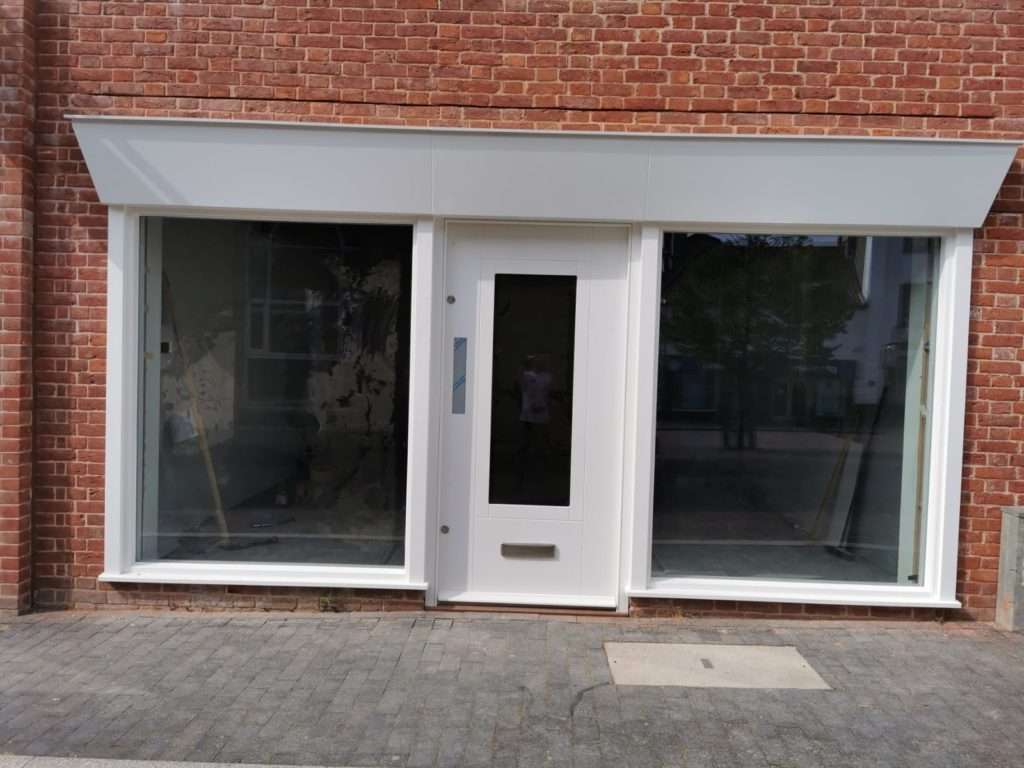Your shop front Installation is more than just a doorway; it’s the face of your business. It’s the first impression you make on potential customers, and a well-designed and installed shop front can significantly impact your brand image and foot traffic. This guide delves into the world of shop front installation, covering everything from the different types of shop fronts to the installation process and essential considerations.
First impressions matter, especially in the world of retail. Your shop front is the face of your business, the first thing potential customers see. A well-designed and professionally installed shop front can draw people in, enhancing your brand’s appeal and boosting foot traffic. But how does one go about installing a shop front that ticks all the boxes? Let’s dive into the nitty-gritty of shop front installation.
Choosing the Right Shop Front
The first step is to decide what kind of shop front best suits your needs and brand identity. Here’s a breakdown of the most common types:
-
Aluminium Shop Fronts: These are a popular and versatile choice, offering a sleek and modern look. Aluminium is lightweight, durable, and requires minimal maintenance. You can customize them with various glazing options and door styles.
-
Frameless Glass Shop Fronts: If you want a minimalist and contemporary aesthetic, frameless glass shop fronts are ideal. They create a seamless connection between your store and the outside, maximizing natural light and offering a more open feel. However, frameless glass can be more expensive and requires specialized installation.
-
Timber Shop Fronts: Timber shop fronts exude a classic and warm ambiance, perfect for businesses aiming for a traditional or boutique feel. While aesthetically pleasing, timber requires more maintenance than aluminium and may not be suitable for all climates.
-
Security Shutters: Security is a crucial consideration, especially for businesses in high-risk areas. Security shutters provide an extra layer of protection against vandalism and break-ins. They come in various materials like metal or perforated steel and can be manually operated or automated.
-
Bi-Folding Doors: Bi-folding doors offer a unique and space-saving option. They create a fully open storefront when needed, perfect for businesses that want to maximize their connection with the outdoors during operational hours.
Benefits of Professional Shop Front Installation
Why should you invest in professional shop front installation? Here are some compelling reasons:
Enhanced Curb Appeal
A professionally installed shop front can significantly boost your store’s curb appeal, making it more attractive to potential customers.
Increased Security
Experts ensure that your shop front is not only aesthetically pleasing but also secure, providing peace of mind against break-ins.
Energy Efficiency
Modern shop fronts are designed to be energy-efficient, helping to reduce your store’s heating and cooling costs.
Planning and Permits
Once you’ve chosen your desired shop front type, it’s time for planning. Here are some key considerations:
-
Permits and Approvals: Depending on your location and the nature of the installation, you might need permits from local authorities. This could include planning permission, building regulations approval, or listed building consent if your shop is in a historically significant area. Consulting with a professional shop front installer can help you navigate the permit process.
-
Design and Functionality: Consider the size and layout of your shop front. Will there be a designated entry door, or will the entire frontage be open? Ensure the design allows for easy customer flow and accessibility. Think about how the shop front will complement your existing signage and branding.
-
Security Features: Security should be a top priority. Opt for toughened or laminated glass for better protection against breakage. Consider including security shutters or alarms for added peace of mind.
-
Lighting and Visibility: Natural light is essential for creating a welcoming atmosphere. Large glass panels allow natural light to penetrate the store. You can also incorporate well-designed artificial lighting to highlight products and create a pleasant ambiance, especially during evening hours.
The Shop Front Installation Process
The installation process typically involves the following steps:
-
Site Survey: A professional installer will visit your shop to measure the space, assess existing structures, and discuss your design ideas.
-
Fabrication: Based on the agreed-upon design and measurements, the shop front components are fabricated in a workshop.
-
Demolition and Preparation (if necessary): If your existing shop front needs removal, this will be done carefully to minimize disruption. The area will be prepped for the new installation.
-
Shop Front Installation: The pre-fabricated shop front components are carefully installed by skilled technicians. This may involve framing, glazing, and door fitting.
-
Finishing Touches: Once the main structure is in place, final touches like electrical wiring for lighting and security systems are completed.
-
Cleaning and Inspection: The installation area is thoroughly cleaned, and a final inspection is conducted to ensure everything is installed correctly and functions as intended.
Important Considerations for Shop Front Installation
-
Experience and Qualifications: Choose a reputable shop front installer with a proven track record and experience with your chosen shop front type. Ensure they are insured and have qualified technicians on their team.
-
Quality Materials: Don’t compromise on quality. Opt for durable and long-lasting materials that can withstand weather elements and regular use.
-
Budgeting: Get quotes from multiple installers and compare pricing before making a decision. Factor in the cost of materials, labor, permits, and any ongoing maintenance needs.
-
Communication: Maintain clear communication with your chosen installer throughout the process. Discuss your expectations, timelines, and any concerns you might have.
-
Warranties and Guarantees: Ensure the installer offers a warranty on their work and the materials.
Conclusion
In conclusion, a well-designed and installed shop front can significantly enhance your business’s visual appeal, functionality, and security. By carefully considering the various shop front options, planning regulations, and installation process, you can create a welcoming and inviting entrance that attracts customers and reflects your brand identity. Remember to prioritize quality materials, experienced professionals, and clear communication to ensure a smooth and successful shop front installation. With a well-crafted shop front, your business will be ready to make a lasting first impression and thrive in the competitive retail landscape.



